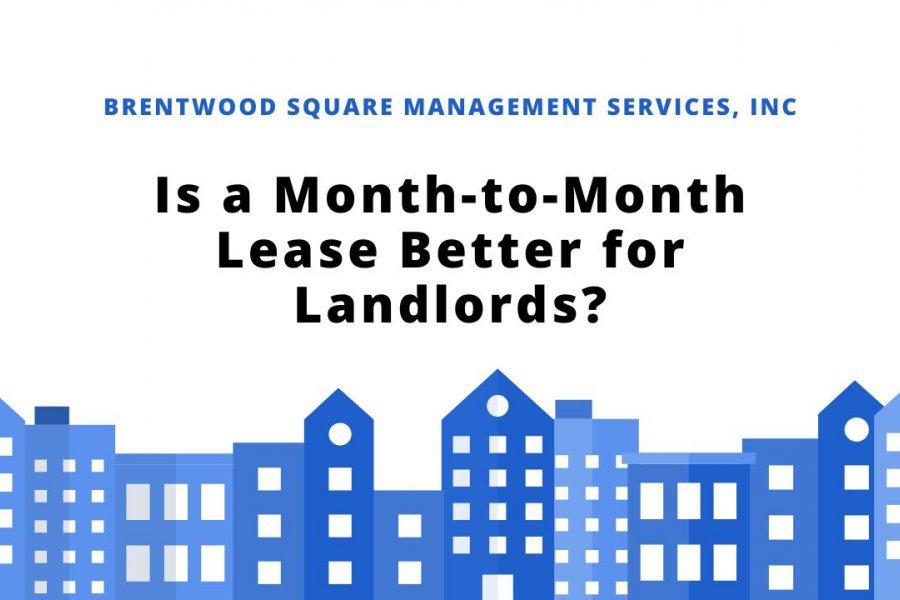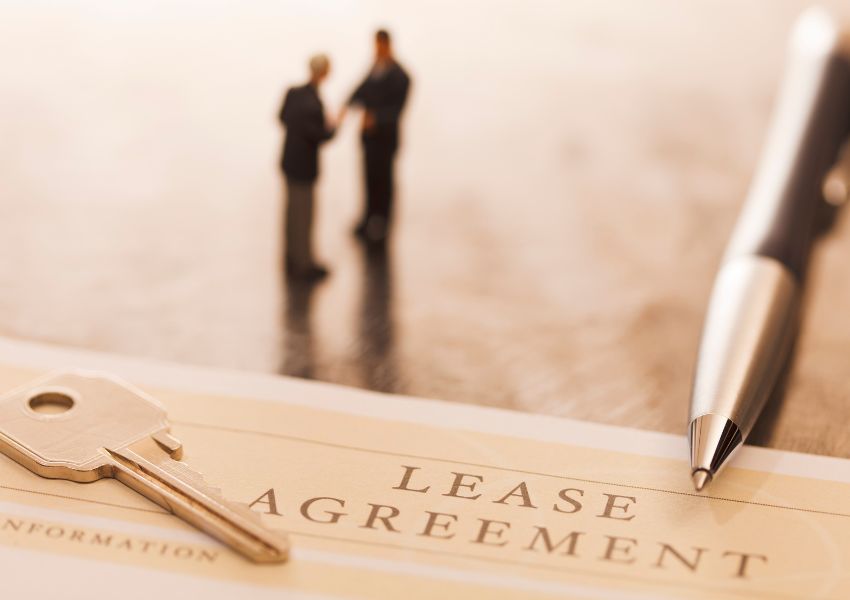
To be a successful landlord, it is vital to learn the differences between month-to-month leases and conventional ones, so you know when is best to offer each. A month-to-month lease is typically a short-term one and is well-suited to landlords who aim for flexibility when renting out their properties. Whereas more conventional leasing agreement generally lasts 12 months.
So, if you’re considering offering a renter a month-to-month lease, we at Brentwood Square Management recommend that you study the specific benefits and drawbacks of this lease. All so you can best understand whether it will benefit your rental business.
What Is a Month-to-Month Lease?
A month-to-month lease binds a landlord and tenant legally. This monthly arrangement is expected to last until one of the party’s issues 30 days’ notice. Usually, there’s already an existing lease agreement that is used for the extension.
But it’s not uncommon for a month-to-month lease to also be the initial setup between a landlord and a renter.
Why Do You Need a Month-to-Month Lease?
Some landlords are comfortable with staying flexible. This could be because they may plan to sell their rental homes in the near future or are waiting for a buyer to finalize the purchase. This makes a month-to-month lease ideal.
In some cases, the tenants may still not be ready to move to their next residential homes. So, it makes more sense to go with a month-to-month leasing arrangement in this situation.

Pros of a Month-to-Month Lease
For those looking for flexible rental conditions, we recommend a month-to-month lease. This makes it easy to research and decide on any changes in terms of property policies or rent pricing. But there are other benefits associated with month-to-month leases. These include:
Flexible End Date
With a month-to-month lease, you can end it when you want to. You’re not trapped waiting for a tenant to move out. So, a month-to-month lease provides more control to the landlords. For example, this gives you the opportunity to gain an interested renter who is offering to pay a higher rent and you only have to wait a short time.
Another good thing about a month-to-month lease is newer landlords can easily test their pricing and policies with little risk. Giving you the opportunity to make improvements with your tenant screening, rent collection, and even marketing strategies.
Easily Increase the Rental Rate
Compared to traditional leases where you need to wait until the tenancy ends before tweaking the rent rate, a month-to-month lease allows you to do this quicker. You also won’t be dealing with tenant complaints over the rental hike. This is a great arrangement if your rental location has a high demand.
No Penalty for Breaking the Lease
There are no penalties to be aware of as long as proper notice is served to the renter. So, a month-to-month allows you to break your lease and end the agreement whenever you desire.

A month-to-month lease is beneficial during the peak seasons of travel since rental demand is higher. You can take advantage of this and generate more income with a higher rental fee.
Keep High-Quality Renters
It’s hard to find good renters who pay on time and treat your rental space well. If you have the good fortune to land these kinds of tenants, and they’re asking for a month-to-month lease arrangement, then it’s sensible to keep to their wishes until they move out.
Cons of a Month-to-Month Lease
While a month-to-month lease offers breathing room for the landlord with its flexibility, it also comes with certain disadvantages:
Uncertain End Date
Although there’s little argument that a month-to-month lease provides benefits to the landlord, it can also leave you with frequent vacancies. As you can expect to attract tenants who are only looking to stay for a short period. Even if the tenants are high quality, they’re only around temporarily so income can be inconsistent.
Short Notice to Find New Tenants
Given that only 30 days of notice is required for the renter to end a month-to-month lease, it’s a lot of pressure for landlords to find new tenants.
Inconsistent Rental income
When you choose to use 30 day leases alone, then you must be prepared for inconsistent income. This is because some months it will be easy for you to find a tenant, but others could take significant time. Meaning you could be left with gaps in your payment schedule.

What’s the Difference Between Month-to-Month Leases and Lease Renewals?
Signing a conventional lease renewal means that your tenants will continue to stay in the rental property for between 6 months and a year depending on your lease. So, you should send a renewal offer before the current tenancy expires. The practice is to send it 90 days before the end of the tenancy. You or the renter may opt for a month-to-month lease in lieu of a traditional lease renewal.
But with a month-to-month lease, you renew more frequently and conventionally only give 30 days’ notice.
What is a Holding Over clause?
When a holding over clause is included in the agreement, it makes it unnecessary to sign a new lease. This means that the lease converts into a month-to-month lease when the fixed-term lease ends. Holdover clauses benefit a landlord by keeping away overstaying renters.
Bottom Line
Now that you know the advantages and disadvantages of a month-to-month lease, you can make up your mind about using them or not. Keep in mind that a month-to-month lease requires more marketing and property maintenance. In which case you may wish to hire a trusted property manager to handle your rental needs.
At Brentwood Square property management, we provide full-service property management solutions, so contact us today if you have more questions regarding leases or any other aspect of property management.
